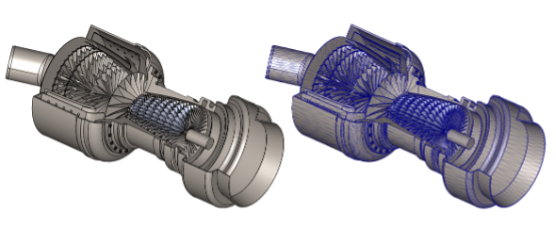CADfix Viz is a new CAD to mesh conversion solution that maximizes the reuse of 3D digital assets for VR/AR/MR (XR) applications.
The use of virtual, augmented, and mixed reality is becoming increasingly prevalent across many engineering sectors, with XR applications proving to increase the efficiency of design processes, reduce the cost of training and simulation, and becoming more widely employed to enhance commercial marketing and sales activities.
The hardware deployed for XR applications, often being lightweight and portable, has technological limitations, and thus the complexity of 3D assets must be managed accordingly for integration with XR headsets, mobile devices, and web applications. CAD models are often large and complex, and the conversion and optimization of large CAD assemblies to XR-ready mesh is a bottleneck when integrating with visualization applications.
CADfix Viz produces optimized XR-ready 3D assets through robust meshing, parameterizable geometric defeaturing, and intelligent decimation. Full process automation and batch capabilities streamline processing, in addition to a full suite of interactive tools for close control over results.
Mesh Generation
CADfix Viz produces accurate, high-quality, watertight mesh from B-rep CAD geometry, repairing problematic CAD to prevent mesh failures and ensure well-oriented normals. The generated mesh has minimal file size, using the minimum number of triangles required to capture geometry within user-defined tolerances. Configurable Sag and Turn values allow close control over the fidelity of the mesh generated. With full access to the assembly structure, mesh can be generated for specific components or sub-assemblies.
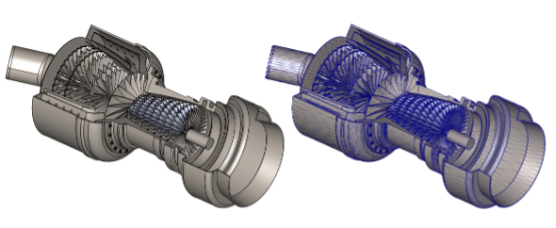 Fig. 1: CADfix Viz optimised mesh generation for complex CAD parts and assemblies.
Fig. 1: CADfix Viz optimised mesh generation for complex CAD parts and assemblies.
Defeaturing
One of the fundamental issues when repurposing CAD data for visualization applications is the vast complexity that arises due to highly detailed CAD features. CAD features, some of which cannot even be seen, contribute significantly to mesh triangle count and file size. CADfix Viz utilizes several advanced defeaturing tools to reduce complexity, triangle count, and file size. Features such as small bodies, holes, protrusions, and internal details can be automatically identified and removed. The figure below demonstrates how removing holes can significantly reduce the mesh complexity, with little impact on the aesthetic of the model.
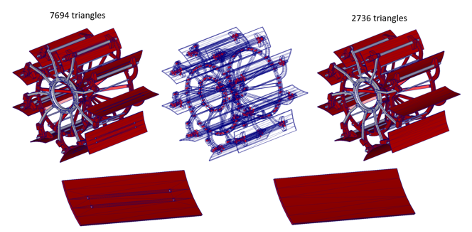 Fig. 2: Automatic hole removal can dramatically reduce mesh size
Fig. 2: Automatic hole removal can dramatically reduce mesh size
Several ‘Wrap’ tools can be employed to reduce the complexity of a model and the resulting mesh size. From bounding boxes to more detailed shrink wraps, CADfix Viz provides the control to balance reduced mesh complexity against retaining the required level of detail.
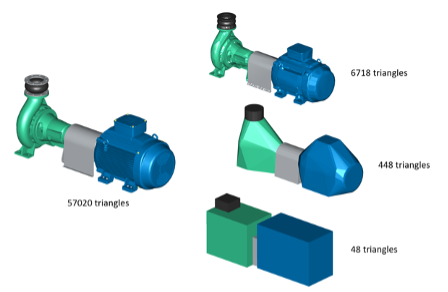 Fig. 3: CADfix Viz triangle wrapping options balance mesh size against required level of detail.
Fig. 3: CADfix Viz triangle wrapping options balance mesh size against required level of detail.
Decimation
CADfix Viz utilizes intelligent triangle decimation algorithms to further reduce mesh complexity without removing CAD features. The intelligent decimation adopts a ‘least destructive’ approach, prioritizing the decimation of complex areas, to achieve the maximum triangle reduction for minimal geometric change. By setting tolerances for the maximum geometric change allowed to a mesh, users can safeguard against excessive decimation. The decimation process targets values for the total percentage reduction of triangles or the resulting maximum triangle count. These decimation rules can be applied across the whole model, individual components, or across selected parts.
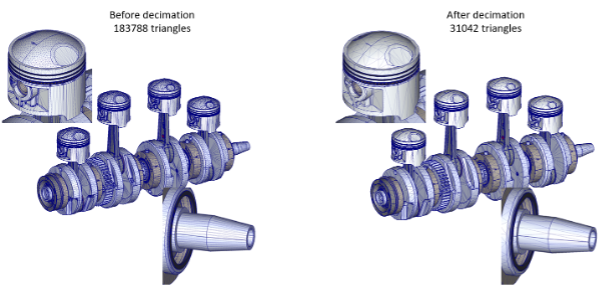 Fig. 4: Intelligent decimation algorithms reduce triangle count whilst retaining key features.
Fig. 4: Intelligent decimation algorithms reduce triangle count whilst retaining key features.
Automation and Level of Detail (LOD) Generation
The full process, from model repair and mesh generation to defeaturing and decimation, can be deployed automatically, with command-line batch capabilities. Using saved parameterizable configurations of tools and tolerances, the end-to-end process can be replicated across multiple models to generate multiple meshes at different LODs automatically. The settings used to generate each LOD use independent mesh generation tolerances, utilizing any combination of the tools the user deems appropriate.
 Fig. 5: Multiple mesh LODs can be generated automatically for a given model.
Fig. 5: Multiple mesh LODs can be generated automatically for a given model.
Import/Export
CADfix Viz offers extensive multi-CAD import support for industry-neutral formats, such as STEP and JTOpen, plus support for native formats from all mainstream MCAD systems. CADfix Viz exports to a range of common formats used in XR applications, such as FBX, glTF, and OBJ. CADfix Viz also exports flavored FBX files suitable for use in the Unreal and Unity software applications, enabling the seamless transfer of complex assemblies containing multiple LODs.
These materials are not sponsored by or affiliated with Unity Technologies or its affiliates. “Unity” is a trademark or registered trademark of Unity Technologies or its affiliates in the U.S. and elsewhere. Unreal® is a trademark or registered trademark of Epic Games, Inc. in the United States of America and elsewhere. Unreal® Engine, Copyright 1998 – 2021, Epic Games, Inc. All rights reserved.
